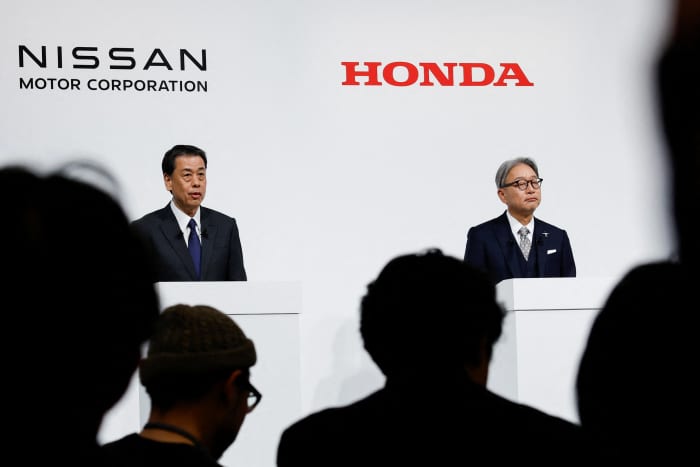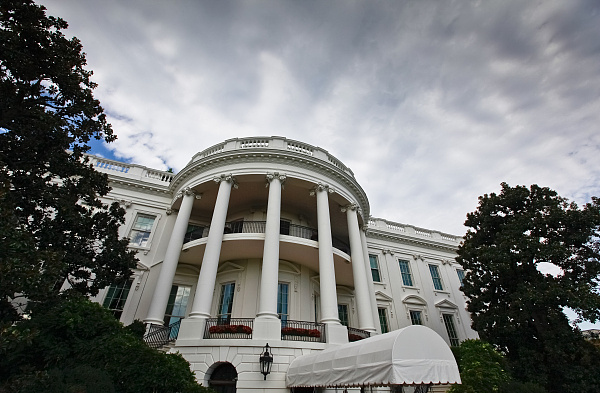
In the grand landscape of the global automotive industry, every strategic adjustment among enterprises can potentially trigger subtle changes in the industry landscape. Recently, the news of merger talks between Honda and Nissan has become the focus of attention in the automotive industry and even the global business field. It has been reported that these two Japanese automotive giants may terminate the merger talks, and this development is like a boulder thrown into a calm lake, stirring up ripples.
Honda and Nissan, as outstanding representatives of Japan's automotive industry, both occupy important positions in the global automotive market. Honda, with its profound foundation in engine technology and the motorcycle field, as well as a series of best-selling models such as the Accord and Civic, has won a large number of fans worldwide. Nissan is equally formidable. With its comfortable driving experience and advanced technology, and classic models like the Teana and Sylphy, it has also established a firm foothold in the market.
Looking back to December last year, Honda and Nissan announced the launch of merger consultations, planning to sign a merger agreement in June this year and establish a holding company in August 2026 to incorporate both companies. Once this news was released, it caused a great stir in the automotive industry. On the surface, the merger of the two companies can be regarded as a "powerful alliance." It can not only achieve efficient resource integration and reduce costs in R&D, production, sales and other aspects, but also work together in technological innovation to jointly address the challenges brought about by the transformation of the global automotive industry.
However, the reality is far more complex than imagined. As time goes by, the progress of the merger talks has not been smooth. The decision on whether to continue promoting the integration talks, which was originally scheduled to be made at the end of January, was eventually postponed to mid-February due to the delay in the formulation of Nissan's restructuring plan. According to multiple informed sources who disclosed to the Japanese media Asahi Shimbun, the business integration talks between Honda and Nissan may be coming to an end, and the two companies will hold separate board meetings to discuss terminating the merger talks.
Informed sources also revealed that the negotiation progress did not meet expectations. Honda once proposed to bring Nissan into a subsidiary, and this proposal was strongly opposed by Nissan. From Nissan's perspective, being acquired by Honda and becoming its subsidiary means losing some autonomy and being restricted by Honda in terms of corporate strategy formulation and management structure. Honda may have put forward such a plan based on its own advantages in market value and other aspects, as well as considerations for the synergies after the merger. Honda's market value is as high as 7.3 trillion yen (about 47 billion US dollars), almost five times that of Nissan, which makes Honda seem to have a more active position in the negotiations.
In addition to the differences in the acquisition plan, the two companies also have differences in corporate culture, strategic direction and market positioning. If different corporate cultures cannot be effectively integrated during the merger process, it will have a negative impact on the synergies after the merger. For example, in terms of corporate management models, Honda may pay more attention to the autonomy of technological innovation and product R&D, while Nissan may have a unique way in market expansion and customer relationship maintenance. How to coordinate the contradictions between the two has become a major problem.
From the perspective of the market environment, the global automotive industry is in a period of drastic change. The waves of electrification and intelligence are surging, and traditional automotive manufacturers are facing unprecedented pressure. The rise of emerging electric vehicle manufacturers such as BYD has made traditional automakers like Honda and Nissan feel huge competitive threats. They originally hoped to enhance their competitiveness through the merger and jointly deal with challenges, but the rapidly changing industry environment and unstable market demand have made the two companies have doubts about the feasibility of the merger. Against the background of increased global economic uncertainty, capital investment has also become more cautious, which has directly affected the decision-making of the two companies.
For Nissan, it has been in a difficult situation in recent years. Since the crisis involving former Chairman Carlos Ghosn in 2018, Nissan's development has been in trouble. The latest financial report shows that the net profit in the first half of the 2024 fiscal year plummeted by 93.5% year-on-year, dropping directly from 296.2 billion yen to 19.2 billion yen. In order to reverse the decline, Nissan has launched a slimming plan of laying off 9,000 people globally and cutting production capacity by 20%. Three factories in North America have even launched an early retirement program. But even so, in Honda's view, these measures are still far from enough, and Nissan is required to take more "drastic" cost control measures. In addition, if Nissan wants to meet the merger deadline in August 2026, it needs to achieve an operating profit of about 400 billion yen (about 2.6 billion US dollars) in that year. Compared with its recent operating profit curve that dropped sharply from 336.7 billion yen to 32.9 billion yen, this goal is extremely difficult.
If Honda and Nissan eventually terminate the merger talks, it will have a profound impact on both parties and the entire automotive industry. For Honda and Nissan themselves, they will lose an opportunity to achieve resource optimization and allocation and enhance competitiveness through the merger. In the future, when dealing with market changes and competition, they may need to explore their own development paths and face greater pressure. From the perspective of the industry, a major industry integration that was originally expected will not be realized. The competitive landscape of the automotive industry may not change as expected, and other competitors will also re-examine their own strategic layouts.
Next, the board meetings of Honda and Nissan will be the key. What will these two automotive giants do? Will they continue to push forward the merger talks with difficulty, or will they decisively terminate and seek other ways out? This "drama" in the automotive industry not only concerns the future of Honda and Nissan, but also will profoundly affect the development trend of the global automotive industry. Let's wait and see.

Below is the English translation of the text, with precise handling of political terms, consistent sentence structures, and preservation of the original’s analytical tone and logical flow:
Below is the English translation of the text, with precise …
On December 15 local time, Trump took the British Broadcast…
In recent years, the application of artificial intelligence…
According to Yahoo US media reports, the recent remarks of …
After 11 years of waiting in the deep sea, we finally have …
On December 17, 2025, the newly renovated American "Preside…